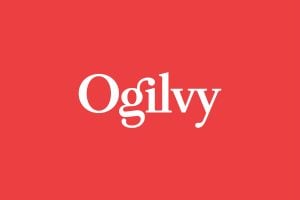
The US$4.5 trillion global wellness economy – growing twice as fast as the global economy – is now so pervasive that for 73% of global consumers, wellness is now considered an essential element of a brand’s strategy. The Ogilvy Wellness Gap study has, for the first time, quantified the gap between consumers’ wellness expectations of brands and how they judge delivery against those expectations in seven key sectors – food, snacks, skincare, airlines, hotels, cars and banking.
Ogilvy surveyed 7,000 consumers from 14 countries across 4 continents to gain new insight into how they see wellness in 2020 and to help marketers close the glaring opportunity gaps as they look to grow their businesses. This global research was conducted in April 2020 at a time when wellness declined rapidly for many, placing an increasing significance on wellness as we move into 2021.
In 2020, 77% of people say wellness is very or extremely important to them. Yet, consumers are still hungry for more: Hungry for more wellness—80% of people want to improve their wellness; Hungry and expecting—75% feel brands could do more for their wellness; Hungry and frustrated—only 46% feel that brands take their wellness as a priority.
Take major wellness industries like food and skincare, which have innovated and grown around wellness for the last two decades. Yet only 41% of global respondents agree the food sector and 53% agree the skincare sector is doing all it should to help them with their wellness.
“Every brand can be a wellness brand now. Wellness is in many ways the more tangible benefit of ‘purpose.’ We think this is very good news for brands. It shows that wellness remains an opportunity for double-digit growth by meeting numerous consumer expectations to close the gap,” said Marion McDonald, Ogilvy’s Global Health & Wellness Practice Lead.
Discussing the implications of this study, Benoit de Fleurian, Ogilvy’s Global Planning Lead for Health & Wellness said, “Wellness has created new conversations, new expectations, new purposes – both for companies and individuals. Wellness has inspired new businesses, new brands, new products, new services, new experiences. Wellness has seen companies pivot their strategy, business and portfolio. Wellness has started to revolutionise entire industries, starting with the food and beverage industry.”
Every brand can have its fair share of the wellness cake
Another important conclusion of the report is that every brand can grow through wellness. Wellness is no longer a luxury sector of spas, nor the preserve of wellness brands; consumers are very clear about it:
- 73% say brands need a wellness strategy as part of their core mission
- 67% say there should be more wellness options, regardless of what they are shopping for
- 52% expect cars, banks or airlines to offer wellness options—almost equal to the snack foods category (56%)
Consumers expect every brand to contribute to their wellness. And 59% agree it’s worth paying more for wellness options.
Social and purpose, the new frontiers of wellness
While healthy meals, good sleep and time to relax remain critical wellness priorities globally, this study finds that wellness is now less self-centred. In 2020, wellness has 4 facets: physical, psychological, social and purposeful.
More and more, people tell us they can’t feel well if they don’t feel connected or if they don’t contribute to making the world a better place.
- 71% say a wellness brand should make a positive difference
- 60% say it should give them a sense of purpose
- 53% say a brand should help them feel connected
This opens many opportunities for brands to form closer bonds with their consumers through activating purpose. Upgrading a brand’s social strategy through the lens of wellness can lead to a richer and more personalised connection and more successful social commerce.
Closing the authenticity gap to reap growth opportunities
Wellness washing is a significantly growing sentiment among consumers, and we found that only 41% agree that brands which make wellness promises are usually believable. Further, 53% say they find it hard to tell the difference between real and fake wellness claims. People want authentic stories, ingredients they can understand, benefits they can believe and most important, brands that deliver on their promises to develop a strong-competitive edge.
The wellness economy offers some of the most exciting growth prospects in consumer goods marketing, and Covid-19 will only accelerate this phenomenon. But there is a profound and urgent need to reframe the wellness offer and close the wellness gap for consumers. The Ogilvy Wellness Gap study helps brands find their growth opportunities in the new frontier of wellness.









